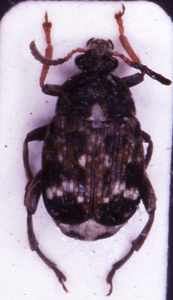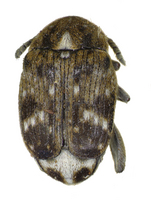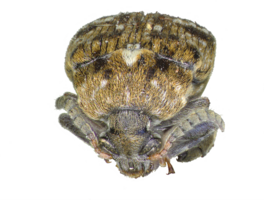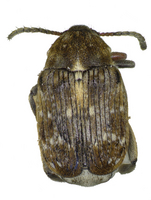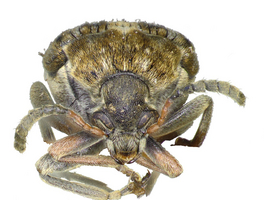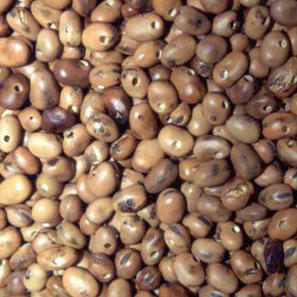Broad Bean Weevil and Pea Weevil
Bruchus rufimanus and Bruchus pisorum
Appearance
The beetles are about 3-5 mm long, blackish, with brown, white-speckled elytra. In the field beetle, the front legs are also reddish, while the middle and rear legs are grey-black. The first four limbs of its antennae are also red. The abdomen has a continuous white hairy area at the rear end. In the pea beetle, the front legs and the first four antennal segments are also reddish. In addition, however, the tips of the rails of the middle legs are reddish and the white hairy area at the rear end of the abdomen has two black spots.
Biology
Both beetles only produce one generation per year.
They overwinter protected under bark, in windbreaks, between lichens, in the leaf litter or still in the seed itself. At the end of their hibernation, they seek out new pea or bean fields. The females feed there on pea or bean nectar and pollen for their maturing diet.
After mating, the female beetles lay up to 10 eggs on the growing pods. A female field bean weevil can lay around 100 eggs, while the pea bean weevil can lay up to several hundred. The hatched larvae bore into the pods, eat circular holes in the seeds and pupate. Some of the young beetles leave the seeds before the harvest, but some remain in the harvested crop and can colonise the new field when infested seeds are sown again.
Economic significance
The beetles cause feeding damage, which can lead to a loss of germination capacity and an increase in the degree of infestation (especially through infested farm-saved seed). Heavy infestations can also lead to yield losses. The beetles are exclusively outdoor pests and not storage pests such as the edible bean beetle(Acanthoscelides obtectus).
Prevention and control
- Use infestation-free seed
- Insecticide treatment with a product authorised for "biting insects" in the respective crop (see list of plant protection products authorised in Austria) after the start of flowering or when the first pods appear is possible.
Last updated: 18.10.2024
automatically translated
